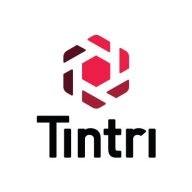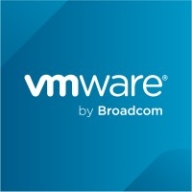


Find out what your peers are saying about Dell Technologies, NetApp, Hewlett Packard Enterprise and others in All-Flash Storage.
By opting for the gold subscription every three years, you get a free upgrade to the latest controller release.
If you wait more than seven years to buy another one, you get a return on your investment.
I accidentally had a volume or VMstore running up to 95%, but it was no issue. The performance was still top-notch despite being used over 90%.
Starting with a smaller infrastructure and scaling as required allows us to save costs initially.
I have seen a return on investment; it's satisfactory in the long run.
We also had one outage where a controller of one of the products had failed and had to be replaced on-site.
Customers always have their issues resolved promptly.
Pure has good storage.
Their support team provides excellent assistance and effectively addresses issues.
I would rate their support nine points.
I am not satisfied with VMware support, particularly with the reaction times, SLAs, and those kinds of issues.
Sometimes the issue is that you don't get the best experience, whether it's the response time or first-level support quality.
It is highly scalable.
It is suitable for both medium-sized and enterprise businesses.
It hasn't broken down anytime in the last six to seven years, despite hurricanes, earthquakes, and power outages.
You do not need to purchase fully populated or maxed-out boxes on day one; instead, you can start with half-populated boxes and expand as your needs grow, adding disks as necessary.
It supports up to 64 nodes in a cluster, allowing us to add nodes and expand the cluster as needed.
During the eight years, there have been no problems such as hardware failure or stopping.
I would rate the stability of the solution as a ten out of ten.
I would rate the stability of the product at seven out of ten.
A new controller was shipped and arrived the next day.
In terms of stability, I give VMware vSAN nine points.
We would appreciate a built-in transparent failover in the next release to eliminate the need for a separate metro cluster.
I'm eagerly anticipating the roadmap's promise of introducing multiple controllers, which could significantly boost scalability and resilience.
We mostly rely on long-term releases. We don't need the most up-to-date features, but we need a reliable environment.
Tintri could improve by ensuring shorter times for support and compatibility when there are new releases from partners like VMware or Microsoft.
Maybe some sort of spreadsheet or visual tool would help. It could show the amount of data and servers we have, guide us on which particular build to choose, and estimate costs.
A proper monitoring tool that encompasses both applications and infrastructure would help in quickly resolving issues.
Maybe incorporation of automation to build clusters in a more automated way would be beneficial.
While the prices may be higher than those of other vendors, we see it as a market leader with benefits.
The support can be a bit pricey, but the solution is more cost-effective than anything else out there.
I would give it a nine out of ten in terms of costliness.
While it might seem expensive per gigabyte initially, the practical capacity and the reduced need for additional backup and storage personnel make it fairly priced.
This has resulted in a slight cost increase.
Pure Storage has signature security technology, which cannot be deleted, even if you are an administrator.
The platform's robust features include excellent sustainability tracking, and a comprehensive dashboard offering insights into IOPS, bandwidth, performance, and virtual activities.
Its data compression feature is the best that we have ever seen.
It is hands-off and runs seamlessly without needing daily management.
I have eliminated bottlenecks with storage and have a more secure storage platform using unwritable snapshots.
Hot add features are available by default in vSphere, allowing us to immediately increase memory, CPU, and hard drive without any downtime.
The VMware vSAN feature that has had the greatest impact on operational efficiency is the basic software-defined storage functionality.
A one-stack solution from one vendor is the main benefit here.
| Product | Market Share (%) |
|---|---|
| Tintri VMstore T7000 | 0.7% |
| Dell PowerStore | 15.9% |
| HPE Alletra Storage | 10.0% |
| Other | 73.4% |
| Product | Market Share (%) |
|---|---|
| VMware vSAN | 14.0% |
| VxRail | 16.1% |
| Dell PowerFlex | 10.0% |
| Other | 59.9% |



| Company Size | Count |
|---|---|
| Small Business | 15 |
| Midsize Enterprise | 11 |
| Large Enterprise | 12 |
| Company Size | Count |
|---|---|
| Small Business | 22 |
| Midsize Enterprise | 27 |
| Large Enterprise | 19 |
| Company Size | Count |
|---|---|
| Small Business | 98 |
| Midsize Enterprise | 58 |
| Large Enterprise | 128 |
Pure Storage FlashArray//X is the world’s first enterprise-class, all-NVMe flash storage array. It represents a new class of storage – shared accelerated storage, which is a term coined by Gartner – that delivers major breakthroughs in performance, simplicity, and consolidation.
For over 10 years, Tintri has been unburdening IT teams of tedious, manual data management with the most advanced, AI-enabled solution on the market. With a commitment to ongoing R&D, Tintri delivers an infrastructure solution built for today’s future-ready, integrated operations from the ground up. We are redefining what data management and analytics look like for today’s dynamic workloads.
Tintri VMstore Adds Feature That No Other Platform Offers
The Tintri VMstore T7000 Series is the latest addition to the storage industry’s only true Intelligent Infrastructure portfolio. The T7000 delivers NVMe driven performance and efficiencies, supporting up to 7,500 virtualized applications in just two rack units. It offers the kind of scalability, availability and security that you’d expect from an enterprise-grade system that powers numerous Fortune 100 firms. Our customers love the outstanding AI-driven efficiency and optimizations that set VMstore apart from traditional approaches. VMstore systems deploy in minutes, self-optimize and dynamically adapt to accommodate the most demanding workloads in the data center maintaining quality of service (Auto-QoS) for each Virtual Machine (VM). Autonomous operations and advanced real-time and predictive analytics consistently drive down storage management activities and costs – by as much as 95%.
Tintri VMstore T7000 – NVMe Platform Datasheet
Tintri VMstore simplifies and automates storage management, delivering real-time analytics, and maximizing performance so you can refocus your efforts on high-impact projects and business innovation.
VMware vSAN is a software-defined storage product that is used in collaboration with VMware ESXi hypervisor and that provisions and manages storage based on policies, regardless of the underlying hardware. The solution enables you to prime your business for growth through its seamless evolution (it is integrated with vSphere and requires no new tools), its flexibility, and its multi-cloud capabilities. As an industry-leading software, VMware vSAN provides high levels of performance with minimal impact on CPU and memory.
VMware vSAN Features
VMware vSAN has many valuable key features. Some of the most useful ones include:
VMware vSAN Benefits
There are many benefits to implementing VMware vSAN. Some of the biggest advantages the solution offers include:
Reviews from Real Users
Below are some reviews and helpful feedback written by PeerSpot users currently using the VMware vSAN solution.
PeerSpot user Yves S., CEO, Cloud Evangelist at Comdivision Consulting GmbH, says, “vSAN gives us a lot of advantages when we need to expand resources. We have an overall larger host infrastructure, and we split that up for specific customer test and use cases. In that specific scenario, we can easily add more hosts or reduce the number of hosts in the environment.”
A reviewer who works in Infrastructure Security explains, “The ease of use is great. The initial setup and upgrade process was pretty straightforward. And, technical support is great.”
Laurent N., Director at Softlogic, comments, "The feature that I have found most valuable is that it is easy to deploy. It is easy to create and delete virtual servers. It is easy to create the load balancing and the clustering."
We monitor all All-Flash Storage reviews to prevent fraudulent reviews and keep review quality high. We do not post reviews by company employees or direct competitors. We validate each review for authenticity via cross-reference with LinkedIn, and personal follow-up with the reviewer when necessary.